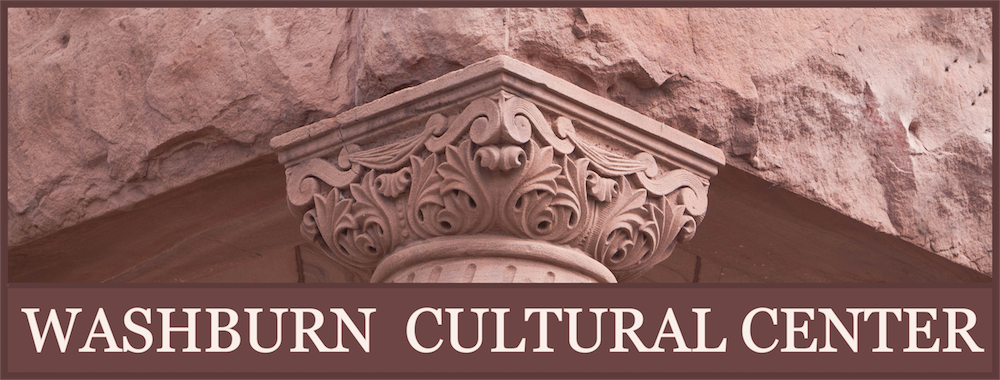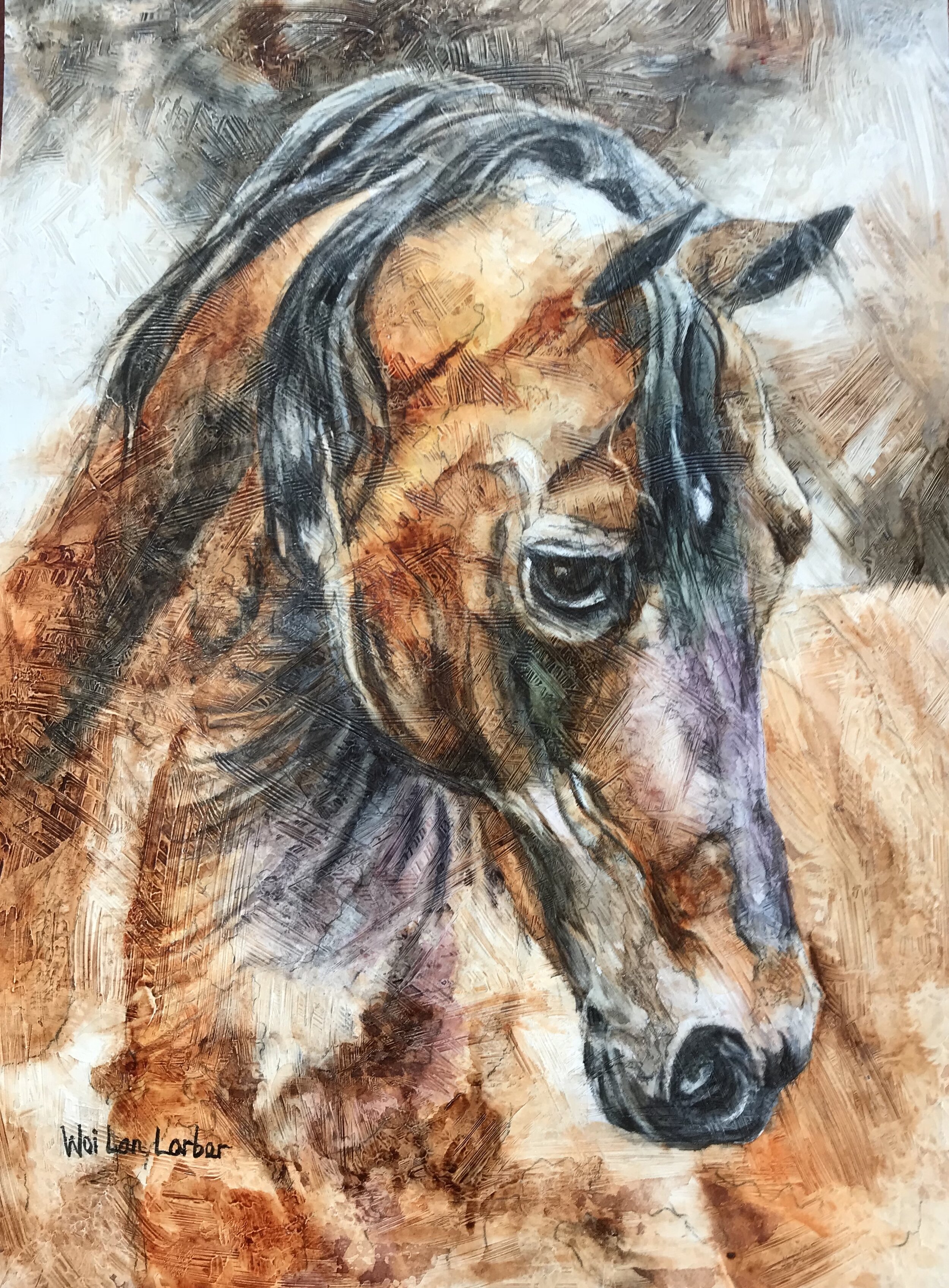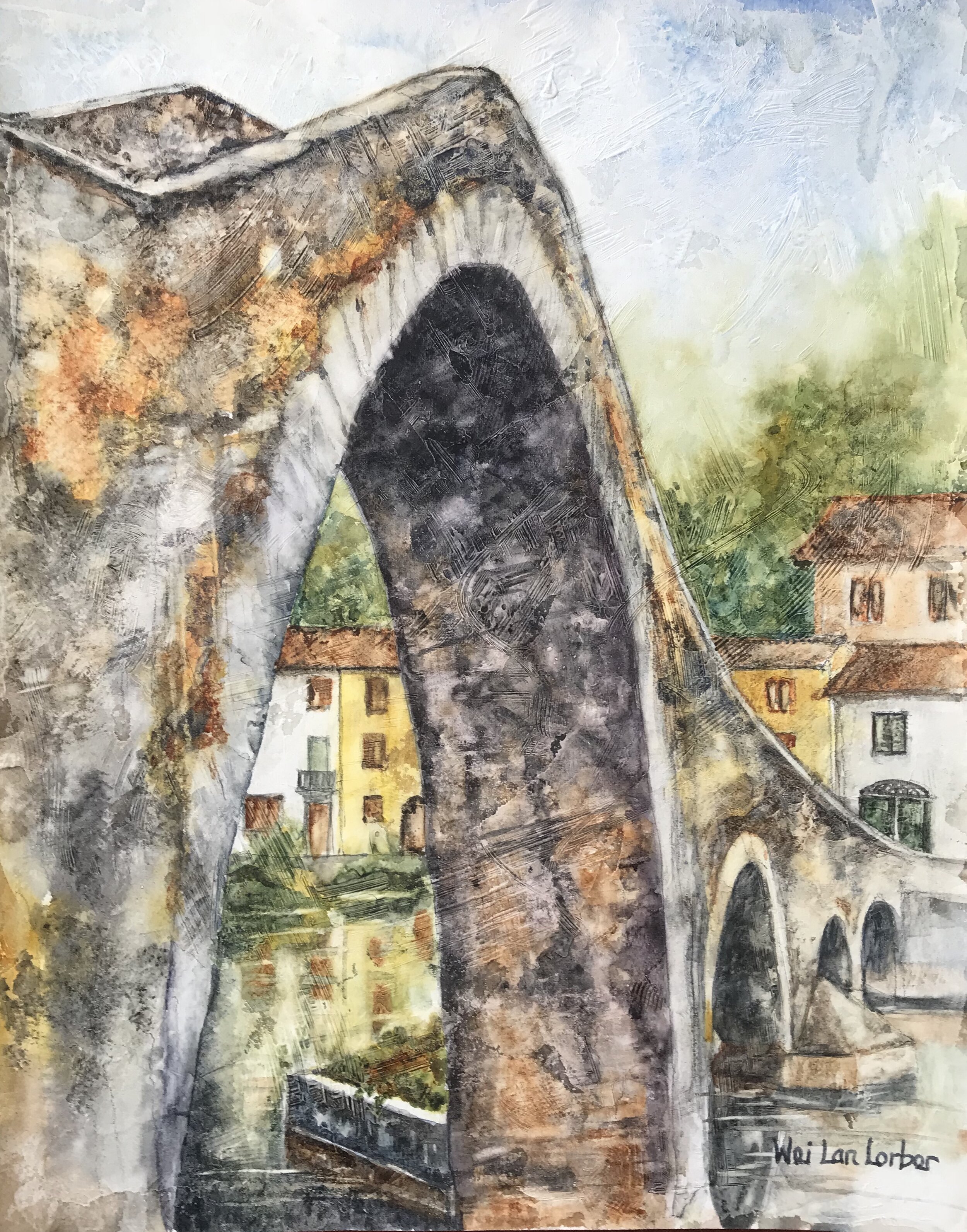Wei Lan Lorber enlivens and animates her watercolor paintings through her use of gesso. Gesso is most often used as white primer for acrylic paintings, but when applied as an underpainting for watercolors, it provides an added layer of texture not frequently seen in the medium. Lorber first applies gesso to the entirety of the painting surface with only a vague idea of her subject matter or composition in mind. She works the underpainting in dynamic but random patterns: combs and forks create sections of heavy texture; sponges, soft brushes, and tissue smooth out overly aggressive areas. Finally, she applies watercolors directly to this layer of dried gesso, revealing its previously barely visible marks.In CHESTNUT (undated), viewers can easily see the defined grooves of a comb in both the painting's subject and background. Watercolor pigments pool in these grooves, producing drastic changes in value with a single stroke—an act difficult to achieve without a textured underpainting . These grooves also act as channels which lead colors to bleed unexpectedly into each other, and the raised edges of the gesso itself introduce unplanned shadows which branch across the work's surface. While gesso mutes the tone of watercolors, Lorber’s use of it here serves to animate the painting. The prominent strokes of a comb and fork in gesso often move against her strokes of watercolor paint, but rather than working against each other, these gestural gessoed strokes rather mimic the movement and flow of a horse’s mane or the coarseness of its coat (the act of combing/brushing gesso onto paper itself resembles the act of brushing a horse's hair). These three-dimensional passages remind us of the sculptural qualities not only of the animals’ hair but also of its musculature.Lorber uses gesso in OLD STONE BRIDGE (2018) to suggest the multitude of textures of the stones and bricks that make up the subject’s surface. Randomly placed, deliberately uneven areas of roughness and smoothness convey the textural qualities of the bridge’s stones and bricks, and these marks also help express both the structure’s imposing physicality and the jagged areas of its wear. Splashes of burnt oranges and light grays, and smooth, ungessoed areas in which watercolor flows more freely, further emphasize the bridge’s tactile qualities.
To see more pastel paintings by Lorber, as well as other works by her, Steve Cotherman, and Milt Lorber, we invite you set up an appointment to view Lorber, Lorber & Cotherman. Slots are available every Wednesday through Saturday between the hours of 1 PM and 5 PM throughout the month of August. Please call (715) 373-5591 or send an email to WashburnCulturalCenter@gmail.com to set up an appointment to view this trio of local artist’s surprising and excitingly varied artwork. Please note that this exhibition is open to the public by appointment only, and for the continued safety of all, masks are required of all visitors. While we encourage you to see this exhibition in person, a virtual slideshow featuring photos of the installed show is available to view here.



